The precious altarpiece of the Deposition of Christ, a 16th-century masterpiece by Rosso Fiorentino (Giovanni Battista di Jacopo; Florence, 1494 - Fontainebleau, 1540), has finally returned to Sansepolcro after seven years, during which it underwent a major restoration at the Opificio delle Pietre Dure in Florence. The project to restore Rosso Fiorentino’s panel was born in 2014 on the occasion of the major exhibition Pontormo and Rosso Fiorentino. Divergenti vie della “maniera,” held at Palazzo Strozzi in Florence. During the exhibition, the Diocese of Arezzo-Cortona-Sansepolcro and the Superintendence of Siena, Grosseto and Arezzo highlighted the serious condition of the pictorial film. The main critical issue lay in the numerous lifts spread over the entire surface, caused by the excessive rigidity of the wooden support, a consequence of a previous restoration probably dating back to the late 18th or early 19th century, following the earthquake that struck Sansepolcro in 1789. Following that catastrophe, five poplar wood crosspieces screwed onto the support were added, hindering the natural movements of the wood and causing lifts in the painting.
After the closure of the exhibition in 2015, the work was returned to Sansepolcro and, thanks to the willingness of the Opificio delle Pietre Dure of Florence to carry out the restoration in its laboratories and the willingness expressed by the Cultural Heritage Office of the Diocese, the necessary procedures were initiated between the institutions involved. On January 20, 2016, the delicate painting was safely transferred to the restoration laboratory of the Fortezza da Basso in Florence, where it was restored with care and dedication. As is usual for the Opificio, the intervention on Rosso Fiorentino’s masterpiece was preceded by a detailed diagnostic campaign that allowed for an understanding of the execution techniques and materials used, both the original ones and those employed in previous restoration work. The work can now return to the church of San Lorenzo, the location that has housed the Deposition for centuries.

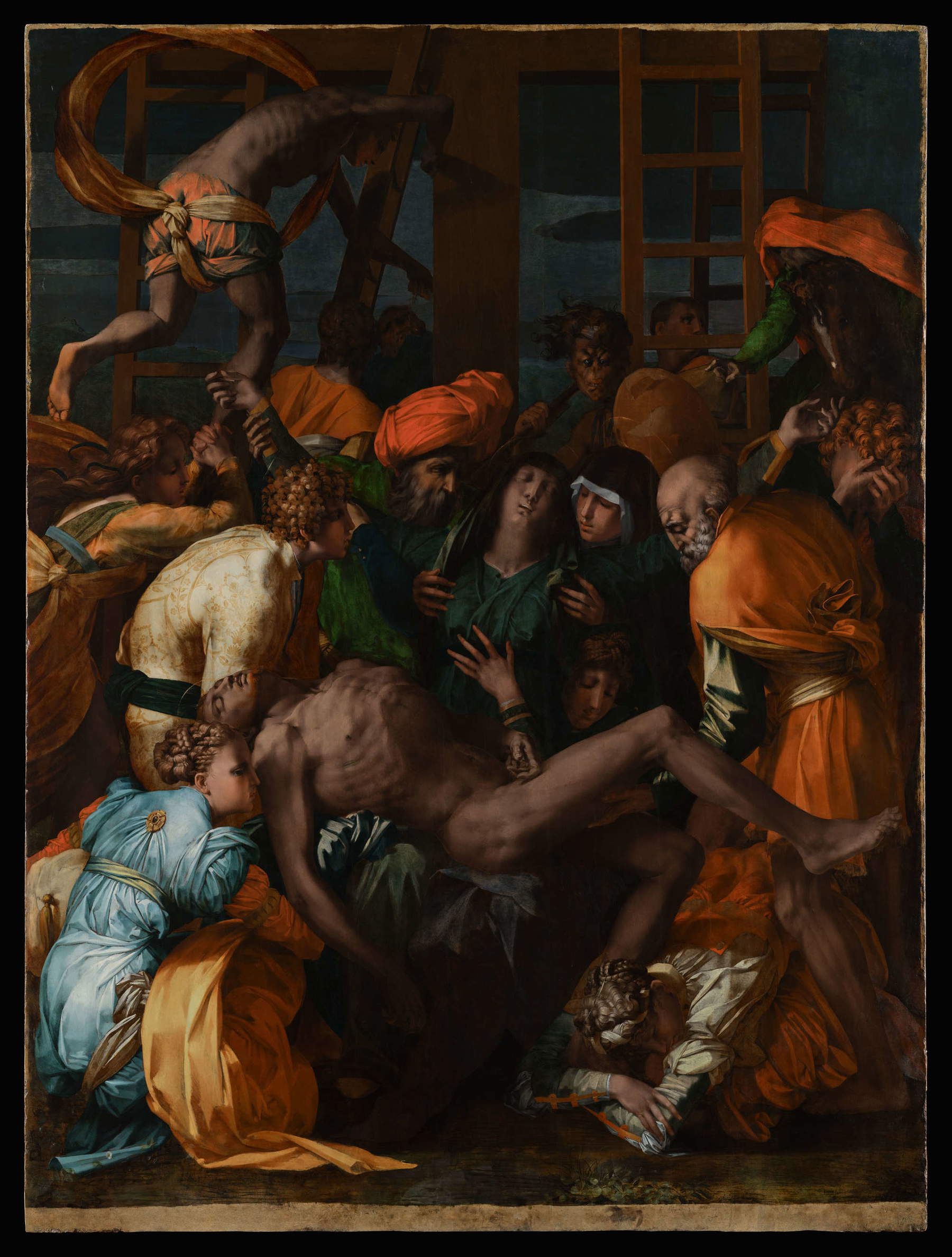
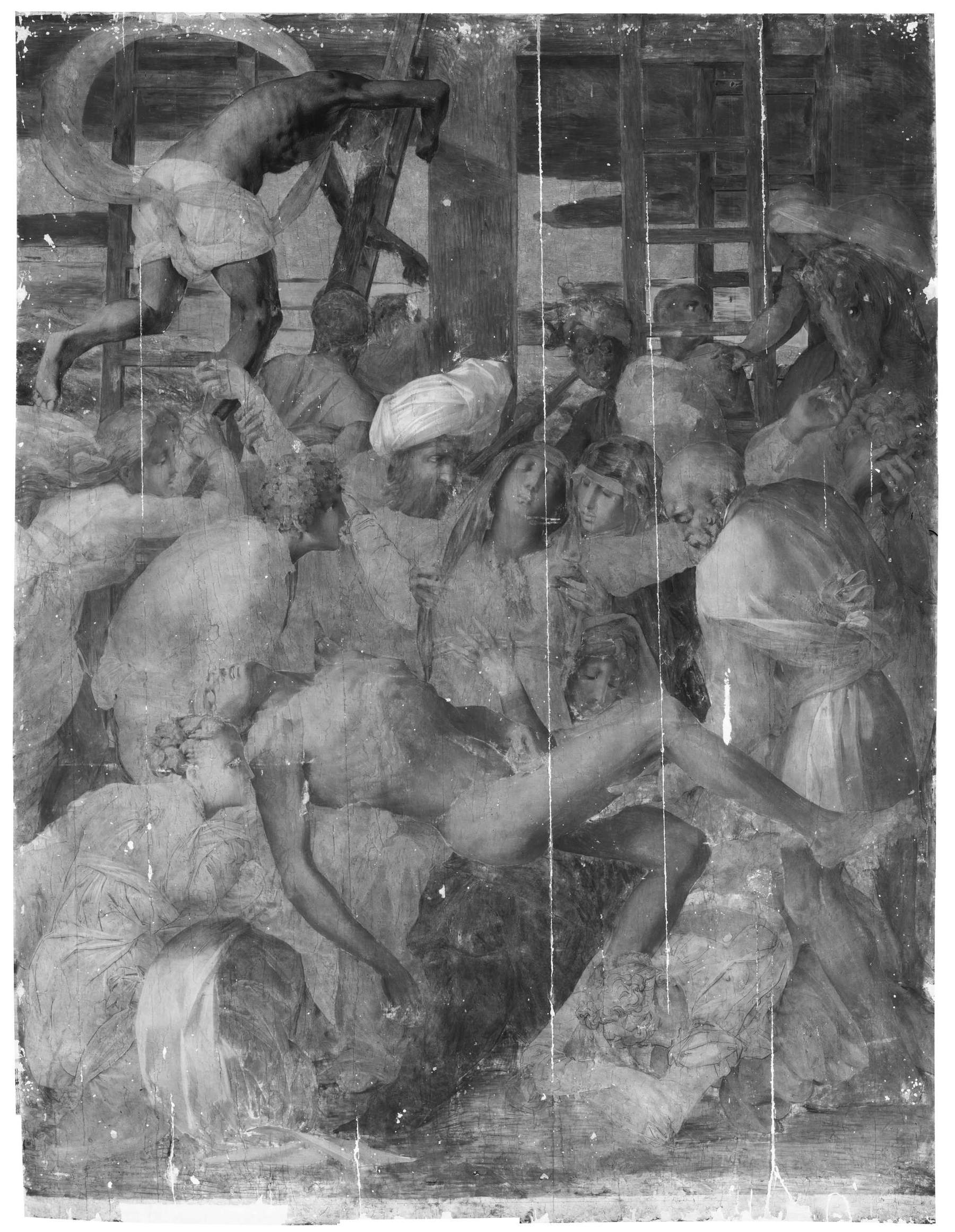
Initially, the intervention focused on the structure of the panel, with the mechanical removal of the masonry and the five non-original crossbeams. After the complete restoration of the wooden support, the two original crosspieces were restored through the use of a spring system to control and follow the natural movements of the wood over time.
Next, the restoration of the pictorial layers was started. Before color fixation, an initial cleaning was performed to remove the thick layers of non-original paint. The actual cleaning was carried out in several stages, as the work had many patinas and overpaintings caused by ancient restorations that had compromised more than a quarter of the pictorial surface. In addition, numerous drips and altered retouches were present. The gaps, mainly due to devotional practices, were not large but still affected significant figurative parts. After the plastering and restoration of the surface, careful color integration was carried out through careful selection of pigments, while the diffuse abrasions were attenuated through light glazing. The restoration, which had to take into account the complex challenges imposed by the pandemic, was completed in May 2023, allowing Rosso Fiorentino’s Deposition of Christ to return to its place of origin in Sansepolcro, restored and preserved for future generations.
The Deposition of Sansepolcro is a masterpiece by Giovan Battista di Jacopo, known as Rosso Fiorentino. Made in Sansepolcro, this work is of significant importance in the career of the artist, who found refuge in this city after fleeing the Sack of Rome in 1527. According to Giorgio Vasari’s account in Lives, Rosso Fiorentino had the opportunity to work on this work thanks to the generous relinquishment of the Biturgense painter Raffaellino del Colle. The latter, initially commissioned to paint the Deposition by the Compagnia di Santa Croce “acciò che in quella città rimanesse qualche reliquia di suo,” ceded the task to Rosso. Moreover, Bishop Leonardo Tornabuoni, with whom the painter had close professional and friendly ties, favored his selection for this important assignment.
Rosso Fiorentino had already tackled the theme of the Deposition in the 1521 Volterra panel, but the Sansepolcro work is distinguished by a more intense and somber drama. Art critics recognize in this work an extraordinarily powerful artistic expression, characterized by a deep personal religiosity influenced by the emerging Counter-Reformation and the tumultuous political situation of the time, with Rome under siege by militias and rulers.
The Deposition of Sansepolcro then represents an illustrious example of the link between the Valtiberina and Rome, influenced by modern figurative trends such as the late works of Raphael and his school, as well as the chromatic power and majesty of Michelangelo’s Sistine Chapel frescoes.
“The complex restoration work has made it possible to restore complete legibility to a text that is fundamental in the development of early Italian Mannerist painting,” explains Sandra Rossi, director of the Mobile Paintings Restoration Sector, Opificio delle Pietre Dure. “Investigations into the artist’s painting technique have, in fact, revealed his uncommon expressiveness and modernity: a brushstroke characterized by continuously broken cross-hatching, almost graphic. Interesting operational details have also emerged, such as the use of the technique known as ’sparing,’ which, by intentionally leaving the brown chromatic background exposed, makes it a figurative element. The restoration has, finally, unveiled moving details, such as the presence of a small daisy in the foreground, which had long been out of view due to the precarious condition of the paint film.”
“It is a moment of great satisfaction,” says Monsignor Andrea Migliavacca, bishop of Arezzo-Cortona-Sansepolcro, "the return to Sansepolcro of Rosso Fiorentino’s Deposition of Christ because it is the result of a work in synergy of different entities, in particular the Opificio delle Pietre Dure, the Superintendence, the Municipality of Sansepolcro, the Diocese, the parish, the associations and all those who contributed to the success of this event and this recovery. It is cause for satisfaction and also significant because it is relocated in proximity to Holy Week, which prepares us to experience the mystery of Christ who died and rose again. This painting presenting us precisely with the deposition of Christ is a great invitation to rediscover the beauty of art in our diocese and together to live it as a proposal for meditation."
“Sansepolcro,” says Emanuela Daffra, Superintendent of the Opificio delle Pietre Dure, "despite the losses it has suffered over time, still has the good fortune of guarding an extraordinary heritage of works of art placed in the places for which they were intended. This is not to be taken for granted, and it explains the particular satisfaction in seeing Rosso’s panel painting once again within its 18th-century frame, sealing a collaboration with the Opificio delle Pietre Dure that is now ’historic’ in terms of continuity and quality of results, as shown by the Pierfrancesco cases of the Polyptych of Mercy and the Resurrection."
“This episode,” comments Gabriele Nannetti, Superintendent of Fine Arts, Archaeology and Landscape for the provinces of Siena, Grosseto and Arezzo, “is a confirmation of a virtuous model of interaction between the offices of the diocese and those of the Ministry of Culture, both as regards theOpificio delle Pietre Dure, which operates throughout the country and is based in Florence, the result was also achieved thanks to a path shared and accompanied in all its phases.”
“Art exhibitions when they are of high scientific value become very important initiatives,” stresses Serena Nocentini, of the diocesan Office for Cultural Heritage. "They are to be considered great events also for the cultural life of the diocese and not only for the civil community. Precisely on the occasion of the exhibition hosted at Palazzo Strozzi and in synergy with our Superintendency, this prestigious collaboration with the Opificio delle Pietre Dure was born. Thanks to their dedication and equal skill, it has been possible to return the beauty and expressive power of this priceless work to the community. Rosso Fiorentino’s Deposition is among the most admired and studied masterpieces in our Diocese, but first and foremost using the words of St. John Paul II regarding sacred art ’it is an experience of universality. It cannot be only object or medium. It is primitive word, in the sense that it comes before and lies at the bottom of every other word.’ And for this very reason, our greatest joy is that the work has returned to its original church, because when conditions are right, sacred works must remain in their context."
“The return of the work represents a great event for the municipal administration and the entire community,” says Fabrizio Innocenti, mayor of Sansepolcro. This is undoubtedly a wonderful reality, that of being able to admire Rosso Fiorentino’s work again in our latitudes after the delicate restoration work that involved it. I take this opportunity to thank the Diocese, the constant efforts of Monsignor Giancarlo Rapaccini, and the generous contribution of the city associations. The municipality also did its part, allocating the sum of 15 thousand euros for the proper lighting of the painting. Rosso Fiorentino’s Deposition will thus once again be usable in all its beauty and evocative charm, a further enrichment to the precious artistic heritage that we guard in the city and that is part of our widespread museum."
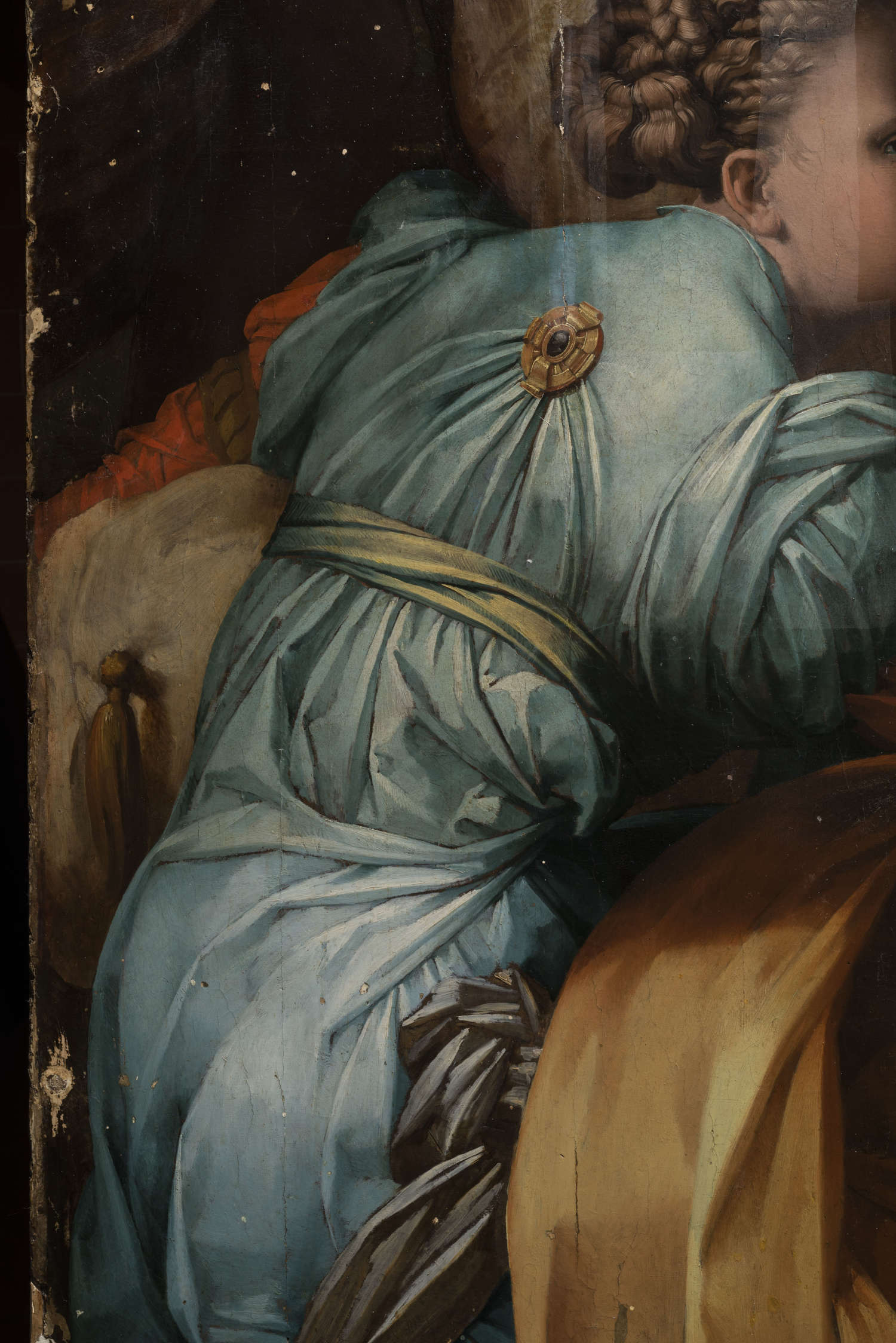
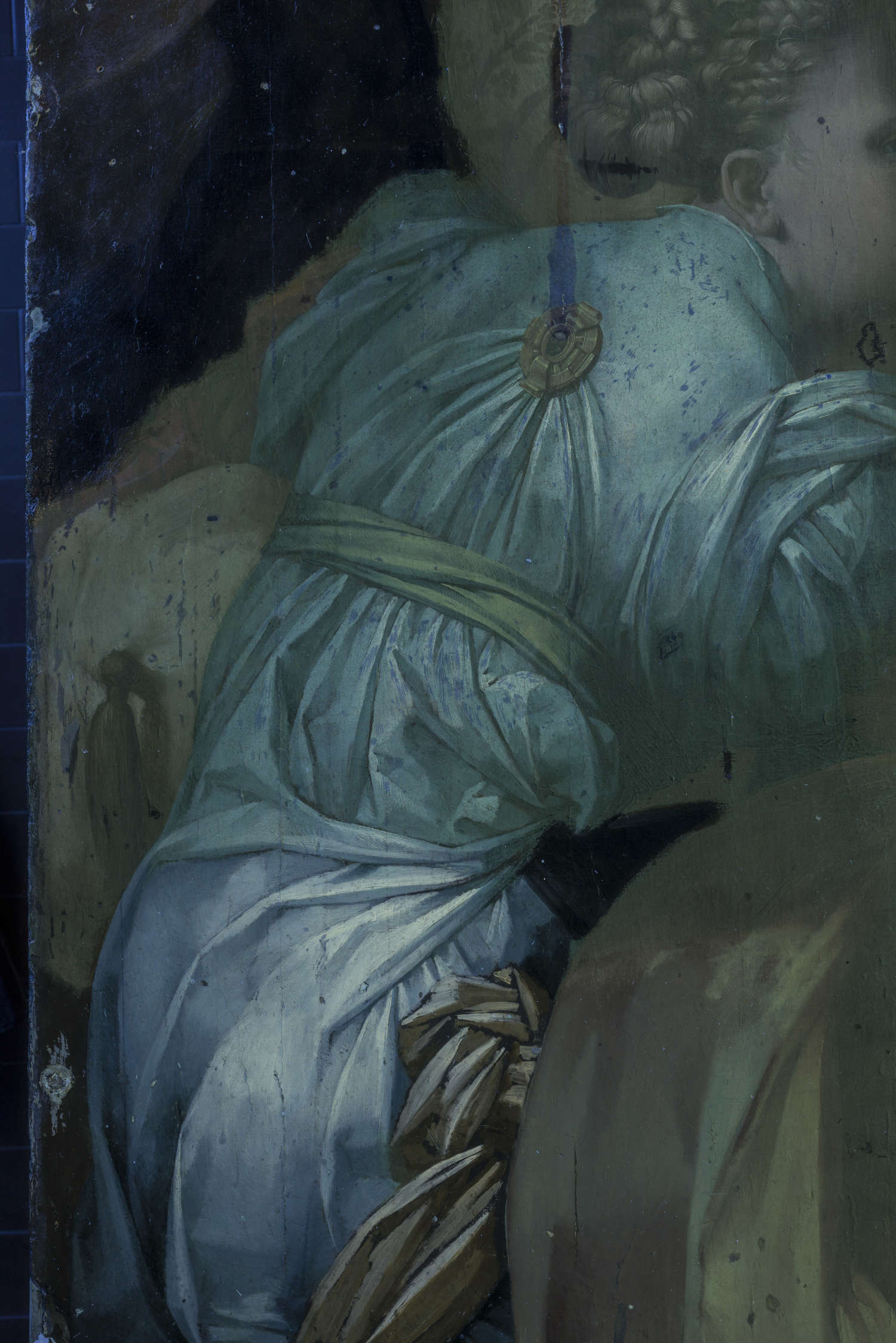
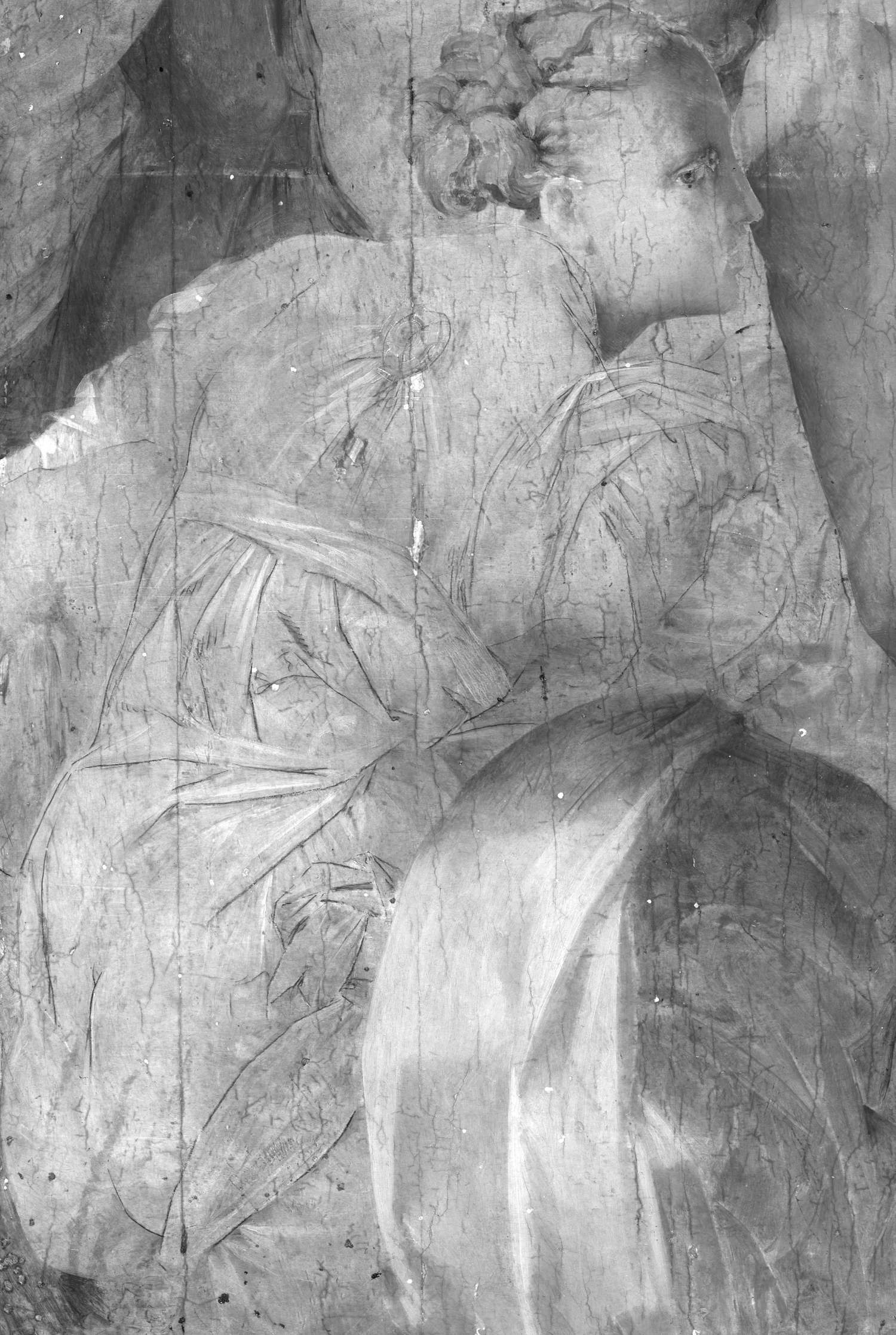
Meanwhile, in Sansepolcro, many citizens expressed the need for work on the church floor, which had been made in the 1960s with blue ceramic tiles. In response to this request, the Diocese has started the design process and obtained permission from the Superintendence of Siena, Grosseto and Arezzo for Archaeology, Fine Arts and Landscape in order to replace the floor with a new one made of terracotta.
The total cost of the project amounts to 36,300 euros, three-quarters of which was covered thanks to resources from the urbanization charges allocated for buildings of worship. The remaining portion, amounting to about 8,000 euros, was raised through self-financing initiatives promoted by the Sansepolcro Cathedral parish and several town associations, including Compagnia Artisti and Vivere a Sansepolcro, Rotary Club Sansepolcro, Lions Club Sansepolcro, Archaeological Barracks, Friends of the Polyhedron, Associazione Campanari, Gruppo Lunedì d’Estate, Gruppo Cavalieri del Trebbio, Teatro Popolare, Volontariato San Lorenzo, Gruppo Filarmonica, and a number of private individuals.
The work was supervised by architect Andrea Mariottini, with the collaboration of David Tripponcini, and carried out by Nako Nasi’s Stema company. For the construction of the new floor, tiles from the Badie di Montefioralle were used, handcrafted and supplied by the company Giorni Aldo, which kindly sponsored the intervention with its technical contribution.
In addition, with the consent of the Superintendency and thanks to the contribution of the local community, the maintenance of the frame and plaster decorations of the high altar housing the Rosso Fiorentino Altarpiece was carried out, curated by artist Rossana Parigi.
“At last the doors of the ancient church of San Lorenzo will reopen,” says Monsignor Giancarlo Rapaccini, pastor of the Sansepolcro Co-cathedral. “Citizens and tourists will finally be able to admire the new handcrafted terracotta floor from Impruneta and, above all, be enraptured before the marvelous painting of the Deposition of Christ. A work of extraordinary artistic value restored by the Opificio delle Pietre Dure in Florence. A long-awaited return by all the people of Biturgeta. It was exciting to see how so many associations in the town worked to raise the necessary funds to restore the painting to a worthy location. The parish, and I personally, took the lead in such an initiative without finding resistance. It was good to work in this way, all together, to enrich our city. I sincerely thank everyone who contributed, with the hope of continuing for other interventions. Those who come to Sansepolcro, the city of Piero della Francesca, must fill their eyes with beauty. And leave with the purpose of returning.”
Thanks to the invaluable support of the Sansepolcro Municipal Administration, it was finally possible to overhaul the church’s lighting. Although it had been installed only a few years ago, it had proven inadequate to ensure adequate reading of the painting. As a result, a technical table composed of the diocese, the parish and the municipal administration was set up in order to design a new lighting system. The task of implementing the new lighting system was entrusted to the company Opera, thanks to which it was possible to intervene to improve the visual enjoyment of the precious work of art in the church of Sansepolcro.
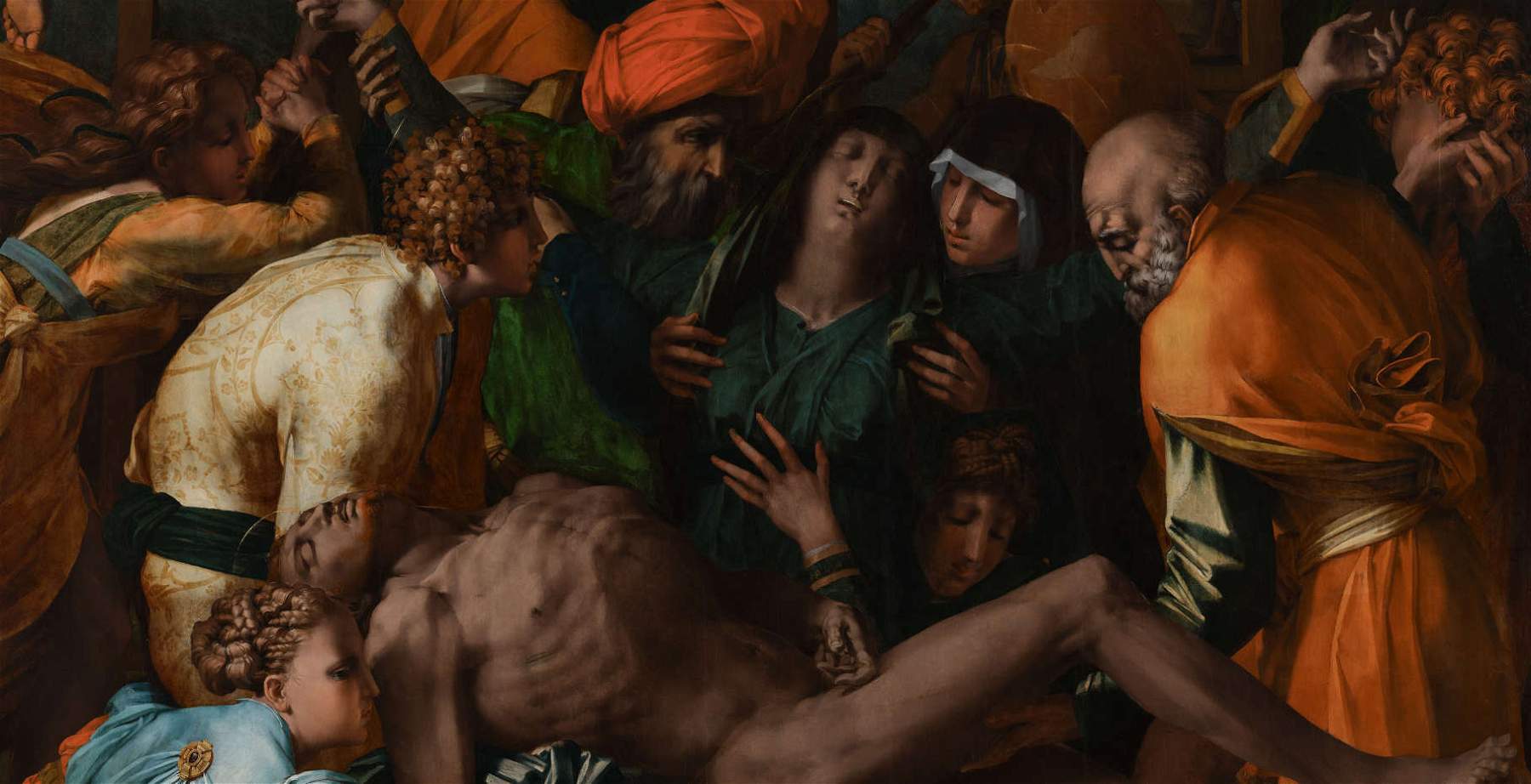 |
| Sansepolcro, restoration of Rosso Fiorentino's Deposition ends after seven years |
Warning: the translation into English of the original Italian article was created using automatic tools. We undertake to review all articles, but we do not guarantee the total absence of inaccuracies in the translation due to the program. You can find the original by clicking on the ITA button. If you find any mistake,please contact us.